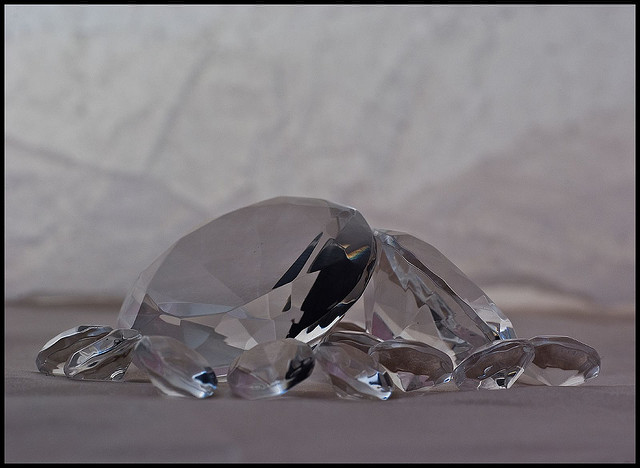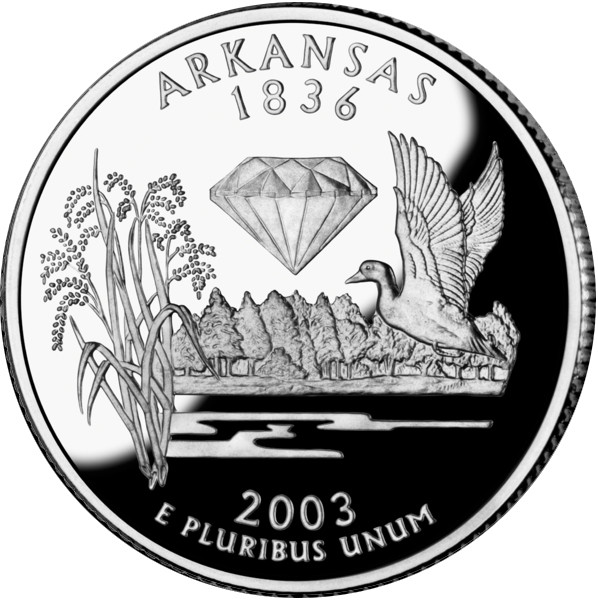Diamonds; photo by Paul Hocksenar on Flickr (noncommercial use permitted with attribution / share alike).
Diamond
Arkansas designated diamond as the official state gem in 1967 (the same legislation, Act 128, recognizes quartz crystal as the state mineral and bauxite as the state rock). Arkansas is one of the few places in North America where diamonds are present and the only place where tourists may hunt for them. The importance of diamonds in Arkansas history is also acknowledged on the state flag and Arkansas state commemorative quarter.
Diamonds are the hardest known substance on earth. Composed of densely packed carbon, a diamond has unique physical and chemical properties (in addition to its brilliance and “fire” when faceted into a gemstone) which make it important to industry. Industrial-grade diamond powders are used to cut and polish gem-grade stones. Other uses include surgical blades, glass cutting and engraving tools, metal cutting tools, and drill bits.
Diamonds were discovered in Arkansas in 1906 near the mouth of Prairie Creek southeast of Murfreesboro, and later diamonds were reported from two small areas two miles northeast of the Prairie Creek pipe. Although these discoveries created a modest local sensation, attempts to mine Arkansas diamonds commercially during the first half of the twentieth century were without sustained success. in the 1950s man-made diamonds suitable for industrial purposes were developed and sealed the fate on Arkansas' diamond mining prospects.
The failed commercial mining operations became a tourist attraction after World War II. The state of Arkansas bought the volcanic pipe property and some surrounding acreage for $750,000, which became Crater of Diamonds State Park in 1972. The lure of finding gem-quality stones has drawn a steady flow of visitors to this unique attraction: nearly 2.3 million guests visited the park from 1972 to 2005. The diamond is also memorialized in the 2003 Arkansas commemorative quarter, which bears a cut gem.



